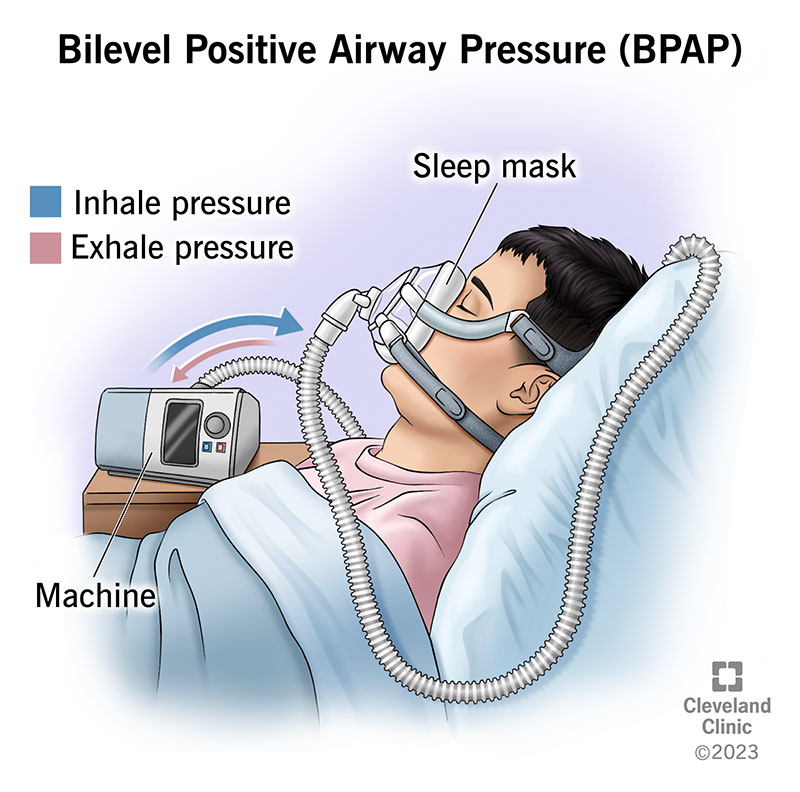Bipap vs. CPAP: Which Is the most effective for Your Sleep Problem?
When browsing the intricacies of sleep disorders, the selection in between BiPAP and CPAP treatment is an important factor to consider. While CPAP supplies a constant air movement ideal for obstructive rest apnea, BiPAP's double stress settings may enhance convenience for those with more intricate respiratory concerns.
Understanding Sleep Disorders
Sleep problems include a series of problems that disrupt typical rest patterns, influencing both the high quality and duration of rest. These disorders can materialize in numerous kinds, including sleeplessness, rest apnea, narcolepsy, troubled leg disorder, and parasomnias. Each problem offers special challenges, often resulting in substantial daytime exhaustion, cognitive disability, and emotional disturbances.
Sleep problems is characterized by trouble falling or remaining asleep, while sleep apnea entails duplicated disturbances in breathing throughout sleep, often resulting in fragmented rest. Narcolepsy, on the various other hand, is noted by extreme daytime sleepiness and abrupt rest strikes. Troubled leg disorder triggers awkward experiences in the legs, prompting an unmanageable desire to relocate them, which can also impede the capacity to drop off to sleep.
The effect of sleep conditions extends beyond private health, affecting general productivity, connections, and high quality of life. Comprehending the certain nature of each condition is critical for efficient diagnosis and treatment. As sleep health and wellness comes to be increasingly recognized as an important element of total wellness, attending to these problems is vital for enhancing both rest high quality and daily functioning.
Just How CPAP Works
Continuous Positive Air Passage Pressure (CPAP) treatment is frequently employed as a key therapy for obstructive rest apnea (OSA) The mechanism of CPAP entails using a machine that supplies a stable stream of air with a mask used throughout sleep. This air flow keeps positive pressure in the airway, stopping the collapse or obstruction of the throat that can take place throughout rest.
When a client takes in, the CPAP equipment supplies a constant flow of air, guaranteeing that the airway stays open - BiPAP Rental. This not just minimizes the symptoms of OSA, such as snoring and interrupted rest patterns, but also lowers the connected wellness risks, including cardiovascular problems and daytime tiredness
The pressure setups on a CPAP machine can be tailored to meet specific person requirements, commonly established with a sleep research study. On the whole, CPAP treatment has been revealed to dramatically enhance the top quality of sleep and general wellness for individuals experiencing from obstructive sleep apnea.
How BiPAP Works
BiPAP, or Bilevel Positive Airway Pressure, is a customized type of non-invasive air flow that is particularly advantageous for people with conditions such as intricate rest apnea or respiratory system disorders. Unlike CPAP, which supplies a continual stream of air at a solitary stress, BiPAP provides two unique pressure setups: a higher inspiratory pressure for inhalation and a lower expiratory pressure for exhalation. This dual-pressure strategy permits less complicated breathing, lowering the effort called for during exhalation.
The gadget runs with a mask fitted over the nose or mouth, attached to a device that produces atmospheric pressure. When the individual inhales, the equipment delivers the greater pressure to aid with air flow, guaranteeing that the air passage stays open. Upon exhalation, the machine immediately minimizes the pressure, making it extra comfy for the person to take a breath out.

Secret Differences Between BiPAP and CPAP

In comparison, BiPAP (Bilevel Favorable Respiratory tract Pressure) provides two various pressure settings: one for inhalation and a reduced one for exhalation. This double stress system enables for even more comfortable breathing, specifically for people who fight with exhaling versus a constant stress. BiPAP is commonly suggested for clients with intricate rest apnea, chronic obstructive lung disease (COPD), or those that call for additional support throughout rest.
Furthermore, the intricacy of BiPAP devices usually results in a greater expense and calls for a lot more mindful titration than CPAP. BiPAP Rental. Comprehending these vital differences can aid in recognizing which gadget might be preferable for particular sleep problems, establishing the foundation for educated therapy choices
Choosing the Right Treatment
The choice in between BiPAP and CPAP treatment largely pivots on the certain attributes of the sleep condition, the individual's total health, and their comfort this page with the tool. CPAP, which delivers a constant stream of air, is commonly prescribed for obstructive rest apnea (OSA)
On the other hand, BiPAP offers 2 levels of stress: one for inhalation and a lower one for exhalation. This double pressure system is advantageous for people with complicated rest apnea or those who experience trouble exhaling versus a continual stress. In addition, BiPAP is typically recommended for people with respiratory problems, such as persistent obstructive lung disease (COPD), where differing stress setups can boost convenience and conformity.
Eventually, an extensive examination by a rest expert, including a rest research, can aid identify which therapy lines up ideal with the person's needs. Aspects such as convenience, ease of usage, and details clinical problems need to additionally be considered to optimize therapy outcomes.
Final Thought
In summary, both BiPAP and CPAP serve distinct functions in the management of rest conditions. CPAP is effective for obstructive sleep apnea through constant air movement, while BiPAP provides double pressure setups that enhance comfort for those with complicated sleep apnea or respiratory system problems. The choice between these treatments must be led by individual needs and problems, requiring a comprehensive evaluation by a rest expert to ensure ideal my sources treatment results and improved quality of sleep.

On the whole, CPAP therapy has been shown to dramatically improve the quality of rest and overall health for individuals enduring from obstructive rest apnea.
BiPAP is commonly suggested for individuals with sites intricate rest apnea, persistent obstructive lung condition (COPD), or those who call for extra support throughout sleep.
CPAP is reliable for obstructive sleep apnea with regular airflow, while BiPAP offers twin pressure setups that improve comfort for those with intricate sleep apnea or respiratory issues.